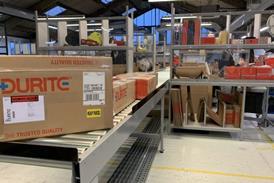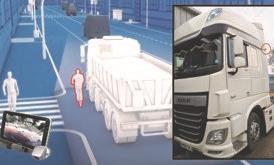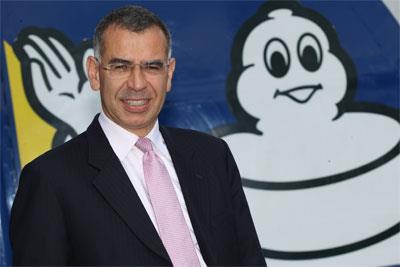
It is now five years since the credit crunch plunged Europe into deep recession. MT editor Steve Hobson went to Michelin HQ in Clermont-Ferrand to find out how the super-premium tyre maker is weathering the storm.
Recessions are tough on premium brands, as buyers go into survival mode and the long-term benefits of spending more upfront to reduce running costs become less important than seeking short-term cash savings. Without secondary brands to woo such operators, Michelin has had to persevere with its message that investing more in a tyre that lasts longer still makes economic sense.
According to Jean-Claude Pats, head of Michelin’s truck product line in Europe, premium tyre brands have held up surprisingly well since 2008.
“When I look at the evolution of market share of different brands in Europe, the big names are resisting quite well – from a market share point of view,” he says. “Financially it is another story, as the market has decreased quite sharply. Compared to 2007 – the last good year – we consider the market has decreased by roughly 20% - that means 7 million fewer units sold in the overall market.”
That translates into an annual European market of 23 to 24 million tyres today compared with 30 million in 2007. “That is a significant drop,” says Pats. “It went down to 20 million in 2009 and while the market has recovered a little we are not expecting any strong recovery in the coming years. The good old years I am afraid are to be forgotten.”
Pressure
Pats is only too aware that his customers the transport operators are under immense pressure to save money and that in turn means Michelin’s long-term total cost of ownership message is harder to sell.
“We see end users exposed to very difficult situation – demand has decreased because of the crisis and costs have exploded. They have to struggle to find new business and try to maintain their margins,” says Pats. “It is true that Michelin in its way of thinking and selling is very long term. Our commitment is to deliver the best cost per km for the whole life of the tyre. That is a new tyre, regroove, retread and regroove again. Over those four lives you will see the cheapest cost per km but it takes time – three, four or five years – and some transport operators may think ‘can I afford to wait that long to get a return?’.”
Just as the haulage market is polarising, with the big fleets swallowing up mid-sized rivals while still relying on small subcontractors to cope with peak demand, so is the tyre market.
“Premium tyre brands are doing quite well and if people cannot afford premium brands they go quickly to very cheap brands. In the middle it is difficult,” argues Pats. “Many operators remain convinced that Michelin is the best tyre on a long-term basis and to generate 1% at the bottom line they know they have to optimise everything. So if they are able to invest in a tyre they still go for Michelin. So theoretically there is a threat but up to now that threat is not converted into a major catastrophe from a market share point of view.”
Inflation
The importance of correct inflation to maximising a tyre’s life is well known, so it is somewhat surprising to hear that Michelin is not following some of the other tyre makers in developing a tyre pressure monitoring system (TPMS).
“We are not making a TPMS but we are recommending its use and our latest truck tyres are compatible with all systems,” says Pats. “If a tyre is not well inflated the mileage and fuel consumption will not be good. Our goal is to make good tyres and if we combine that with TPMS that is more than welcome. But we are not developing a system.”
For the time being at least, Pats reports that raw material prices are stable, and the sharp price hikes of 2011 that lead to panic buying of truck tyres are not about to be repeated.
“In the first half of 2011 we were exposed to a very exceptional situation,” he says. The crisis was there already and the market was far below the 2007 record. But because of the raw material price increases, Michelin and some of our competitors passed on in six months three to four price increases totalling 15% to 20%.
“As a result, many dealers and transport operators took the decision to buy in advance, so the price increase fuelled a kind of speculation in tyres. Consumption did not increase by 20% all of a sudden. Dealers increased their inventories and operators took the decision to anticipate their needs up to December 2011 in some cases. It was very exceptional – everyone was telling me ‘there is a big shortage’ - two months later because the price increases were over all of the sudden the shortage disappeared. Ever since I have seen the market going down continuously.
“Raw material prices are not increasing any more which is good news. They have not sharply decreased over the last two or three years and they are still quite expensive but the situation is stable for the time being.”
Compared with their car and motorcycle counterparts, truck tyres are raw material hungry, so finding ways to reduce manufacturing cost is difficult – but not impossible.
“All our customers are struggling to cut costs so we have to decrease our manufacturing costs and we are working every day on this,” says Pats. “In such a difficult market it is our duty is to do our best in this area.
“The biggest cost today is from raw materials, and we cannot influence the cost of natural rubber. But a truck tyre weighs on average today around 60kg and if you can deliver tomorrow the same performance with only 55kg that is good. We will reduce our cost because we are putting less raw material into the tyre. These things take years of work but we can have an impact here.
“We are committed to manufacturing long-lasting tyres which can be regrooved, retreaded and regrooved. If you regroove and retread you are multiplying the total life of the product by 2.5. The retread gives the same performance as the new product and the regroove is providing 20% to 25% additional mileage. Every time we do not retread a tyre we are wasting 60kg of raw materials. Can we afford to throw away a tyre and ignore the long-term impact on the environment? In my opinion, no.
“So we don’t see why the fundamentals of our offer should change. The world is changing and we have to listen. Maybe we will have to fine tune some points but those two points are so important - the financial position of our customers and the environmental issue – that I cannot see a position where Michelin would say we ‘don’t care any more about that – let’s produce a cheap tyre that you throw away after 80,000km’. We know that if we do not change in a crisis we will have problems – so we may have to change but not completely.”
Fuel
While the cost of putting rubber on the wheels is significant, Pats also points out that tyres’ influence on fuel consumption is far more important.
“One third of the fuel consumption of a tractor and trailer is generated by the tyres. So when people say ‘tyres are only 3% of my running cost’ they are totally wrong. Including fuel, they are much closer to 30% than 3%,” he says. “So for an average tractor/trailer using 30l of fuel per 100km running 100,000km a year, on an annual basis the tyres’ impact on fuel consumption is 9,900l. So if you can decrease fuel consumption by 1l or 2l per 100km – which is happening – then you can see immediately the impact on the bottom line.”
Nevertheless, Pats concedes that this fuel saving equation is for more straightforward for longhaul operations than regional distribution or multidrop.

“The UK is not a highway market, it is a more regional market,” agrees Pats. “So many people in the UK may say the majority of our trucks are not in those conditions – that is absolutely true. If we consider all the road conditions and the use made of the trucks at a European level, more or less half the market is regional.
“Does this mean rolling resistance has no influence on regional tyre? No. It has some influence. Not as strong as pure highway because you are combining different kinds of usage but in a full day maybe two or three hours you are driving the truck where it will allow good opportunities for low rolling resistance tyres.
“It also depends what you consider low rolling resistance tyres. Today the best labelling rates are achieved by long haul tyres. Does that mean we don’t care about rolling resistance for regional tyres? No. We care but we have to care about other things too – it is a compromise and we have to improve in some cases.
For small trucks which stop and go, you may say there is no need for low rolling resistance. But maybe tomorrow some of those trucks will be hybrid or full electric – then rolling resistance will be even more important than today.”
Labelling
This brings us nicely onto the thorny topic of tyre labelling – or, in the truck market, more accurately the information on rolling resistance, noise and wet grip that must be provided to the buyer.
“For Michelin, labelling is a good thing,” says Pats. “We are thinking about tyres every day – most people do not. To bring them some clear and impartial information is very good – but is it enough? Our position is that no, it is not enough.
“Especially in the truck business, the same truck with the same tyre can provide very different performance depending on the driver, the load, the road etc. So our position is that labelling is very good because it educates our customers but our advice is to say ‘before you decide which brand to buy there are many other things to be considered’.
“If you can, try our products in your real operations with your trucks, your drivers, your loads and your roads – then you will make the best decision.”
Bearing in mind that purchase price and mileage are probably the two most important considerations when buying a tyre, some sort of mileage label would seem to be a major omission.
“In the truck industry, who would buy a tyre without any knowledge of the mileage?” asks Pats. “So far the impact has been limited – my interpretation is that luckily a lot of truck operators do know about tyres. They know it is much more complex and they are sticking to what they have learnt from the past and from the tests they have made, and they have not changed dramatically their purchasing.”
As a result Pats is adamant Michelin will not go chasing A or B ratings at the expense of mileage.
“It is very easy to design a tyre which will deliver a good performance on one single item – wet braking, rolling resistance or mileage,” he says. “A tyre is always a compromise between different performances. Because we are Michelin and we are committed to deliver the best tyres we cannot play this game too much. Labelling is something we are considering, but never, never, never will we go for an A in a given area at the expense of mileage. It would be completely stupid to go for an A in wet braking and cut the mileage by 30%.”
Nor does Pats believe getting an accurate mileage label will be easy.
“I started working for Michelin 25 years selling tyres in the field so I have worked with end users every day,” he says. “It is very difficult – can you summarise mileage performance by a single letter with a test done on a machine? What is the goal of labelling? To give end users valuable information to help them make the best decision for them. True life is much more complicated than running a tyre on a machine. But it may come.”

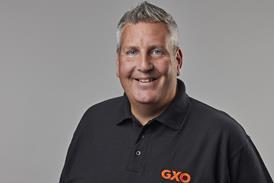

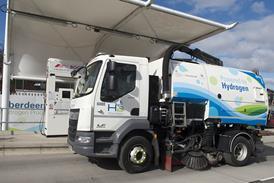


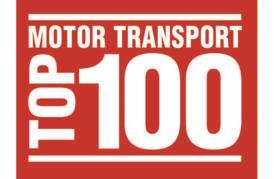
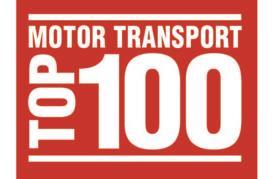
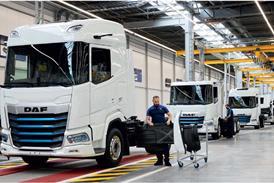
![Mercedes-Benz_eActros_600_(1)[1]](jpg/17820_mercedesbenz_eactros_600_11_978080.jpg)

